March 26, 2017, just as we were arriving home from training, we received a call from our answering service requesting assistance for a horse cast in a shed.
We headed out to Orting, WA, after getting permission from the Pierce County officials. We found Buster laying in an open shed, attended by concerned family. He’d been down for a couple of hours already and was unable to get up on his own due to a healing injury.
Joining us on site was Dr. Galen of Tacoma Equine Hospital, Buster’s vet. We’d recently met her at a seminar the hospital put on we’d been invited to present at and it was helpful to have her familiar with what we do.
Buster wasn’t in immediate distress, and we were somewhat limited on responders so rather than the divide-and-conquer scenario we’ve used in the past, we set up the tripod and lift system before rigging Buster.
Once that was in place, we pulled the straps for the sling under Buster so we could use them as handles to pull him on to the rescue glide. Before we had a chance to secure Buster to the glide, he attempted to get up, causing him to slide down a bit. We grabbed a wide strap from the van and put a forward assist on him so we could pull him back onto the glide.
We think the family deserves a big shout-out here. It was extremely helpful to have them lending some muscle as well as giving Buster a sense of familiarity while he lay in a vulnerable position while all the noises and strange people surrounded him. Additionally, Buster had an anxious herd mate nearby, a gray mare one of the family members did an outstanding job of keeping occupied and safely out of the way.
Dr. Galen gave Buster a light dose of sedation to help him out as well as keep us safer since the sedation would keep Buster from trying to stand while we strapped him to the glide. We were very careful of his previous injury to his pelvis and placed minimal pressure on him. We also did not hobble or attempt to manipulate his hooves. We had plenty of room to maneuver him without having to pull the feet in.
Dr. Galen acted as our animal attendant, keeping Buster from trying to get up by kneeling on his neck as well as letting him know he wasn’t alone.
Once Buster securely on the glide, all available people pulled him from under the shed to under the tripod where the team attached him to the lift bar and unstrapped him from the glide. Anyone not otherwise occupied jumped on the haul team.
Buster was raised to his feet. He hung, as horses often do before they realize they aren’t laying down anymore for a small amount of time. Then we gradually put more and more weight on his feet and the anxiously watching humans gave a palpable sigh of relief. At that point, Buster began to graze, always a good sign from a horse.
Finally, we let him stand a bit. Dr. Galen was satisfied with his condition and we cautiously packed up, leaving the rigging and tripod for last in case Buster decided to go down again.
We headed home after a debrief and a short equipment sorting and inventory session leaving Buster to explore the grass in his owners’ back yard.
![]() View, share, and comment on this story on Facebook.
View, share, and comment on this story on Facebook.
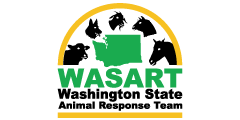
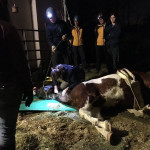
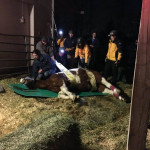
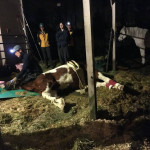
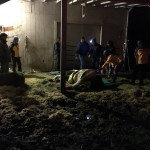
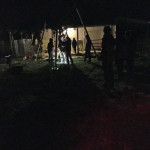
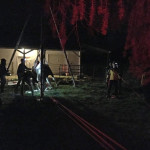
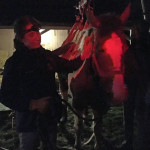
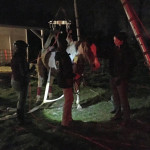
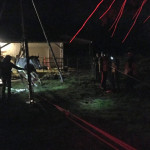
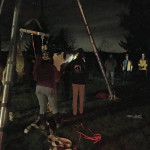
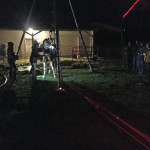
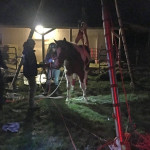
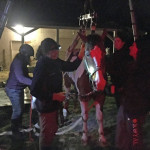
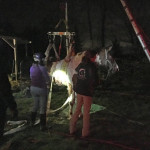
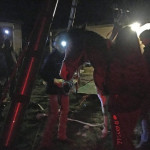
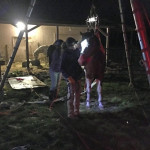
 Sheila, Dog Over A Cliff
Sheila, Dog Over A Cliff